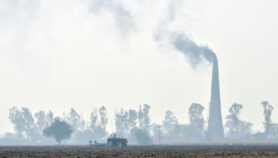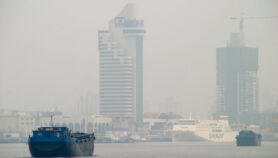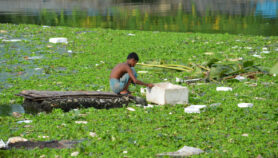By: Ranjit Devraj
Send to a friend
The details you provide on this page will not be used to send unsolicited email, and will not be sold to a 3rd party. See privacy policy.
[NEW DELHI] Pregnant women in South Asia are exposed to the dirtiest ambient air in the world with nearly 30 per cent of pregnancy losses in the region attributable to exposure to air quality that exceeds WHO guidelines, a study says.
Published in Lancet Planetary Health this month, the study, covering the 2000—2016 period, used an epidemiological approach to establish links between levels of PM2.5 (particulate matter smaller than 2.5 microns) in atmospheric air and pregnancy loss. Pregnancy loss covers miscarriage or loss before completing 20 weeks of gestation while stillbirth is defined as loss that occurs after the first 20 weeks including neonatal death or infant demise within a week of birth.
The study found that 29.7 per cent of the annual pregnancy losses in Bangladesh, India and Pakistan were attributable to PM2.5 exposure above the WHO air quality guidelines. South Asia has the world’s highest rate of pregnancy loss and about 35 per cent of the world’s stillbirths occurred in Bangladesh, India and Pakistan.
“Our study is based on data from the well-known Demographic and Health Surveys programme,” Tao Xue, lead author of the study and post-doctoral researcher at the Institute of Reproductive and Child Health, Ministry of Health Key Laboratory of Reproductive Health, Peking University, tells SciDev.Net.
The main challenge, says Tao, was in designing a reliable method to associate air pollution and pregnancy loss, given the many varied and unmeasured factors. “So, we utilised a self-matched design, in which a case of pregnancy loss was compared to the corresponding control(s), i.e., normal deliveries by the same mother.”
Gestational exposure to ambient PM2·5 significantly increased the risk for pregnancy loss, miscarriage, and stillbirth while suboptimal air quality was a key contributor, said the study, the first to quantify the effect of air pollution on pregnancy loss in South Asia.
Preventing pregnancy loss has a close bearing on the UN’s Sustainable Development Goal three (good health and well-being) and five (gender equality).
Women who suffer pregnancy loss can be adversely affected physically and mentally and have an increased risk of postnatal depressive disorders with higher probability of infant mortality in a subsequent pregnancy, the study noted. Additionally, pregnancy loss can affect a family’s planning for children and increase costs related to pregnancy such as loss of labour or reduced income during maternity leave, the study said.
“Our findings suggest that improving air quality can promote maternal health and sex [gender] equality by reducing pregnancy losses,” says Tao. “South Asia has the highest burden of pregnancy loss globally and is one of the most PM2.5-polluted regions in the world. Our findings justify urgent action to tackle dangerous levels of pollution.”
“Our findings suggest that improving air quality can promote maternal health and sex [gender] equality by reducing pregnancy losses”
Tao Xue, Peking University
Lalit Dandona, distinguished research professor at the Public Health Foundation of India (PHI), an autonomous, public-private initiative, says the findings of the study were consistent with other research initiatives that have indicated the serious consequences to public health of high levels of PM 2.5 in ambient air.
“In India, evidence of the adverse effects of air pollution on health has been growing with studies showing that both short-term and long-term exposure are associated with disease burden and mortality,” Dandona tells SciDev.Net.
Dandona had himself led a study on the health and economic impacts of air pollution in India, published online in the Lancet Public Health on 22 December, which calculated that in 2019 1.67 million deaths were attributable to air pollution in India — accounting for 17·8 per cent of total deaths in the country that year.
“We estimated that the lost output from premature deaths and morbidity attributable to air pollution amounted to economic losses worth US$36·8 billion or the equivalent of 1.36 per cent of India’s gross domestic product,” Dandona says.
Air pollution, according to Dandona, has the potential to impede accumulation of future human capital by reducing children’s survival, undermining their health, and reducing their ability to benefit from education.
This piece was produced by SciDev.Net’s Asia & Pacific desk.
















